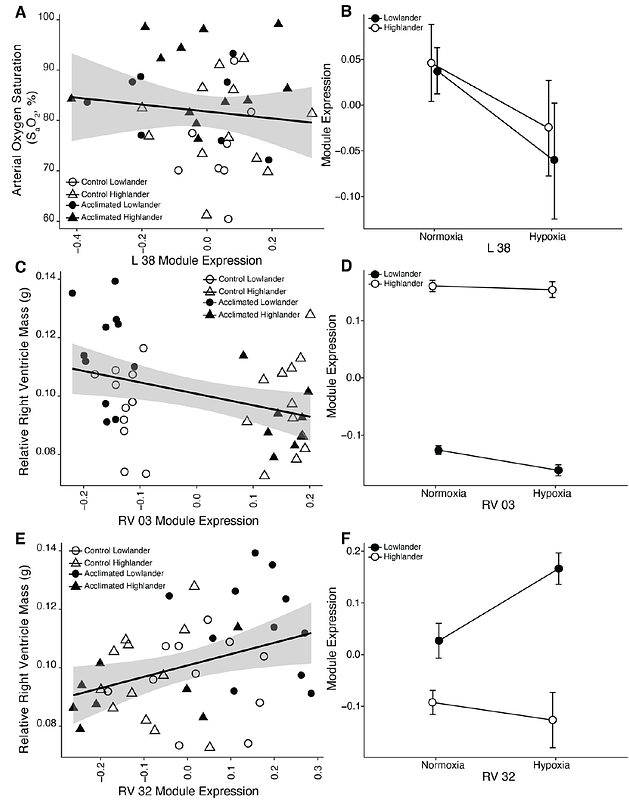Local adaptation, plasticity, and evolved resistance to hypoxic cold stress in high-altitude deer mice

Local adaptation, plasticity, and evolved resistance to hypoxic cold stress in high-altitude deer mice
Bautista, N. M.; Herrera, N. D.; Shadowitz, E.; Wearing, O. H.; Cheviron, Z. A.; Scott, G. R.; Storz, J.
AbstractA fundamental question in evolutionary biology concerns the relative contributions of phenotypic plasticity vs. local adaptation (genotypic specialization) in enabling wide-ranging species to inhabit diverse environmental conditions. Here we conduct a long-term hypoxia acclimation experiment to assess the relative roles of local adaptation and plasticity in enabling highland and lowland deer mice (Peromyscus maniculatus) to sustain aerobic thermogenesis at progressively increasing elevations. We assessed the relative physiological performance capacities of highland and lowland natives as they were exposed to progressive, stepwise increases in hypoxia, simulating the gradual ascent from sea level to an elevation of 6000 m. The final elevation of 6000 m far exceeds the highest attainable elevations within the species\' range, and therefore tests the animals\' ability to tolerate levels of hypoxia that surpass the prevailing conditions within their current distributional limits. Our results demonstrate that highland natives exhibit superior thermogenic capacities at the most severe levels of hypoxia, suggesting that the species\' broad fundamental niche and its ability to inhabit such a broad range of elevational zones is attributable to a combination of genetically based local adaptation and plasticity. Transcriptomic and physiological measurements identify evolved changes in the acclimation response to hypoxia that contribute to the enhanced thermogenic capacity of highland natives.


